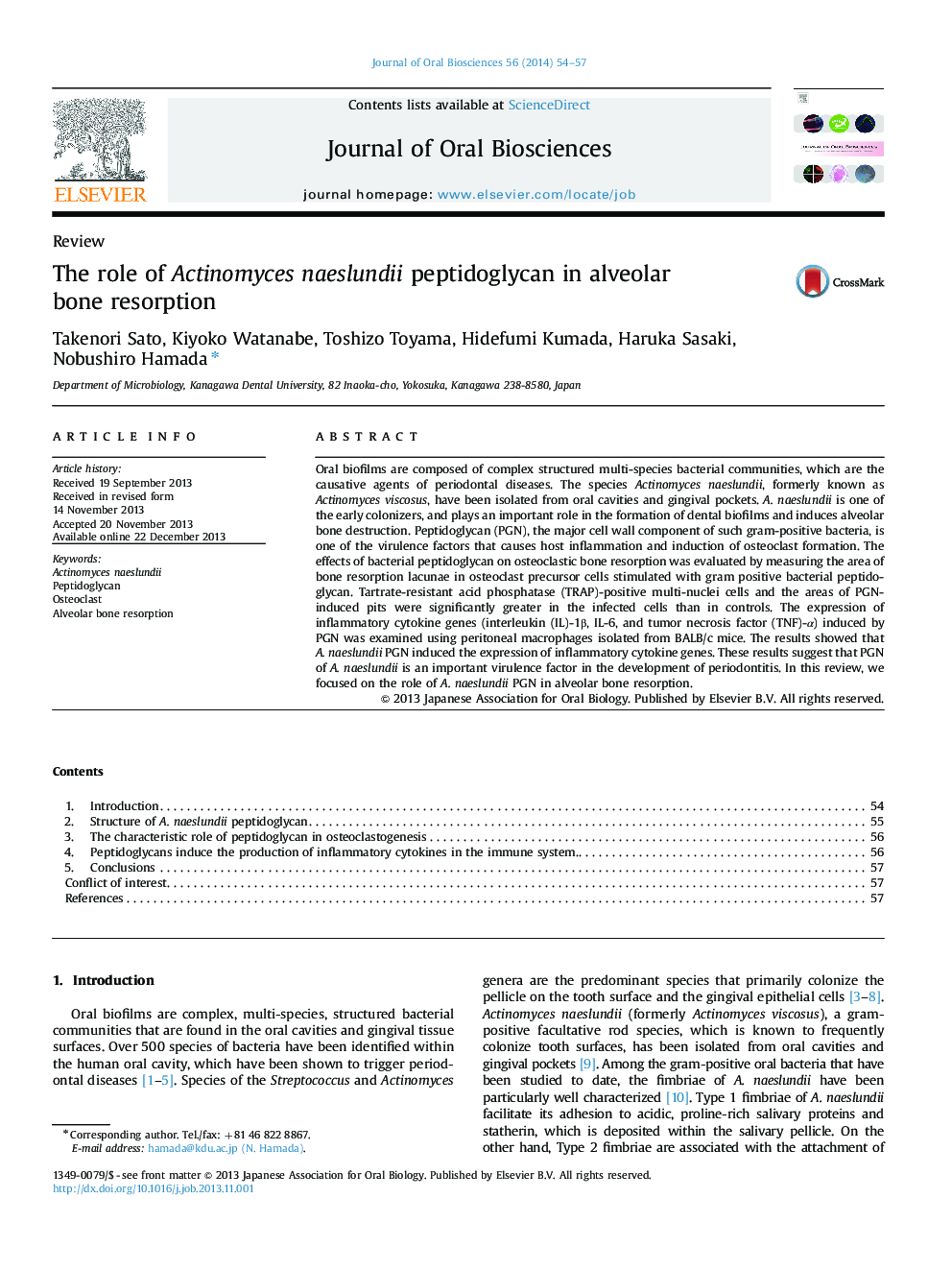| Article ID | Journal | Published Year | Pages | File Type |
|---|---|---|---|---|
| 2776866 | Journal of Oral Biosciences | 2014 | 4 Pages |
Oral biofilms are composed of complex structured multi-species bacterial communities, which are the causative agents of periodontal diseases. The species Actinomyces naeslundii, formerly known as Actinomyces viscosus, have been isolated from oral cavities and gingival pockets. A. naeslundii is one of the early colonizers, and plays an important role in the formation of dental biofilms and induces alveolar bone destruction. Peptidoglycan (PGN), the major cell wall component of such gram-positive bacteria, is one of the virulence factors that causes host inflammation and induction of osteoclast formation. The effects of bacterial peptidoglycan on osteoclastic bone resorption was evaluated by measuring the area of bone resorption lacunae in osteoclast precursor cells stimulated with gram positive bacterial peptidoglycan. Tartrate-resistant acid phosphatase (TRAP)-positive multi-nuclei cells and the areas of PGN-induced pits were significantly greater in the infected cells than in controls. The expression of inflammatory cytokine genes (interleukin (IL)-1β, IL-6, and tumor necrosis factor (TNF)-α) induced by PGN was examined using peritoneal macrophages isolated from BALB/c mice. The results showed that A. naeslundii PGN induced the expression of inflammatory cytokine genes. These results suggest that PGN of A. naeslundii is an important virulence factor in the development of periodontitis. In this review, we focused on the role of A. naeslundii PGN in alveolar bone resorption.
